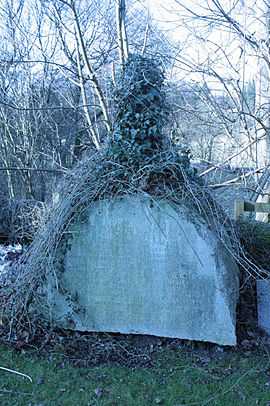Alexander Campbell Fraser

Alexander Campbell Fraser (3 September 1819 – 2 December 1914) was a Scottish philosopher.
Born at Ardchattan, Argyll, the son of the parish minister, he was educated at the universities of Glasgow and Edinburgh, where, from 1846 to 1856, he was professor of Logic at New College. He edited the North British Review from 1850 to 1857, and in 1856, having previously been a Free Church of Scotland minister, he succeeded Sir William Hamilton as professor of Logic and Metaphysics at Edinburgh University. In 1859 he became dean of the faculty of arts.
He devoted himself to the study of British and Irish philosophers, especially George Berkeley, and published:
- Collected Edition of the Works of Bishop Berkeley with Annotations, etc. (1871; enlarged 1901). Charles Peirce praised this edition for both including some writing not in other editions, and offering a more carefully edited texts. While Peirce praised the book for the provision of useful introductions, he opined that the explanatory notes disfigured every page in an unnecessary and useless manner.[1]
- Biography of Berkeley (1881),
- Annotated Edition of Locke's Essay (1894),
- Philosophy of Theism (1896)
- a biography of Thomas Reid (1898) in the "Famous Scots Series". He contributed the article on John Locke to the Encyclopædia Britannica.
In 1904 he published an autobiography entitled Biographia philosophica, in which he sketched the progress of his intellectual development. From this work and from his Gifford Lectures (1894-6) we learn objectively what had previously been inferred from his critical work. After a childhood spent in an austerity which stigmatized as unholy even the novels of Sir Walter Scott, he began his college career at the age of fourteen at a time when Christopher North and Dr Ritchie were lecturing on Moral Philosophy and Logic. His first philosophical advance was stimulated by Thomas Brown's Cause and Effect, which introduced him to the problems which were to occupy his thought. From this point he embraced the scepticism of David Hume.
In 1831 Sir William Hamilton was appointed to the chair of Logic and Metaphysics, and Fraser became his pupil. He himself said "I owe more to Hamilton than to any other influence." It was about this time also that he began his study of Berkeley and Coleridge, and deserted his early phenomenalism for the conception of a spiritual will as the universal cause. In the Biographia this "Theistic faith" appears in its full development (see the concluding chapter), and is especially important as perhaps the nearest approach to Kantian ethics made by original English philosophy. Apart from the philosophical interest of the Biographia, the work contains valuable pictures of the Lam of Lorne and Argyllshire society in the early 19th century, of university life in Glasgow and Edinburgh, and a history of the North British Review.
Fraser is buried in the small northern cemetery at Lasswade with his wife, Jemima Gordon (1819-1907), against the north boundary.
References
- ↑ Charles Sanders Peirce (1991), Peirce on Signs, Chapel Hill: University of North Carolina Press, ISBN 0807819921, OCLC 23462965, 0807819921
External links
-
 Works written by or about Alexander Campbell Fraser at Wikisource
Works written by or about Alexander Campbell Fraser at Wikisource - Fraser's Gifford Lectures on Philosophy of Theism
-
 This article incorporates text from a publication now in the public domain: Chisholm, Hugh, ed. (1911). Encyclopædia Britannica (11th ed.). Cambridge University Press.
This article incorporates text from a publication now in the public domain: Chisholm, Hugh, ed. (1911). Encyclopædia Britannica (11th ed.). Cambridge University Press.
|